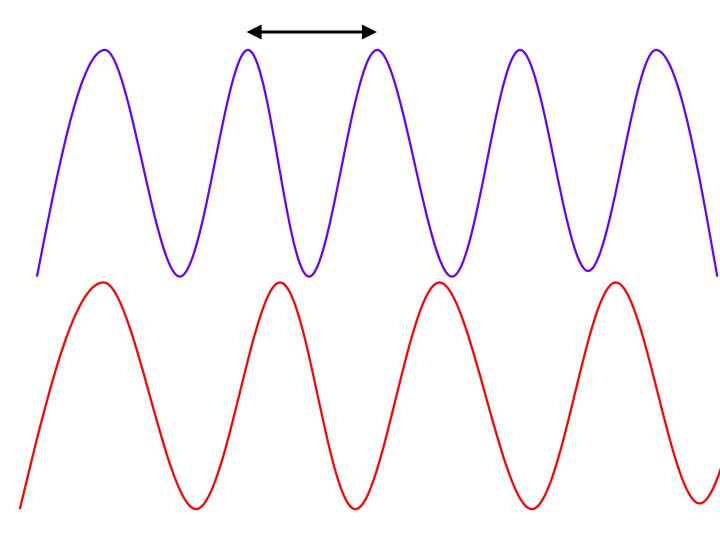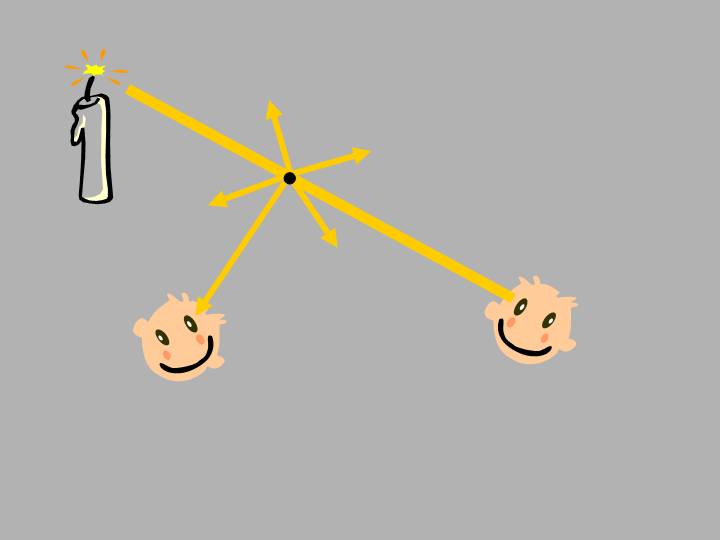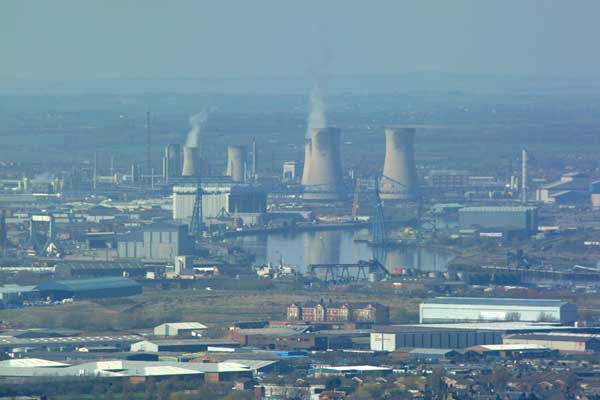 > English > Climate Encyclopaedia > Clouds and Particles > more > 3. Clouds, particles and climate > - Particles and visibility
> English > Climate Encyclopaedia > Clouds and Particles > more > 3. Clouds, particles and climate > - Particles and visibility
|
Clouds & ParticlesMore |
Particles and visibilityAtmospheric pollution often affects visibility. Visibility is defined as the greatest distance at which an observer can see a large black object against the sky on the horizon. Several factors determine how far we can see through the atmosphere. These include the characteristics of the atmosphere, the brightness of the sky, how good our eyes are and our perception. We focus here on how atmospheric constituents affect visibility.
|
Light in the atmosphereLight is a kind of energy that travels in waves. The wavelength of the light is the distance between the tops of the waves (shown by the arrow in Figure 1). Light from the sun looks white, but is actually composed of several colours (those you see in a rainbow or using a prism). The colours have different wavelengths, frequencies and energies. Violet has the shortest wavelength in the visible spectrum, whereas red has the longest wavelength. |
|
|
Light travels in a straight line as long as nothing disturbs it. In outer space, light from a torch would only be seen by someone directly in the light’s path. It's different in our atmosphere. Light travels in a straight line until it bumps into a particle or a gas molecule. What happens then depends on the wavelength (energy) of the light and the size of the thing the light hits.
|
|
Gas molecules and atmospheric particles are smaller than the wavelengths of visible light. When light hits a gas molecule, the molecule absorbs and scatters the light in a different directions. This is why at night we can see the beam of a torch even if we are not in the light’s path. The different colours of light are scattered differently after collision. The scattering is called Rayleigh Scattering. It is more effective at short wavelengths (the blue component of visible light) and this is why the sky looks blue. |
Scattering of light by particlesVisibility is reduced when atmospheric particles between the observer and the object absorb or scatter light from the sun. Light scattering by particles is the most important phenomenon responsible for impairment of visibility. Light can also be absorbed by atmospheric constituents: for example, elemental carbon (soot) and NO2 are particularly effective at absorbing light.
|
|
|
|
|
|
|
|
People's perceptionIncreases in the amount of fine particles in the atmosphere are associated with reductions in visibility, and this is considered to be an indicator of overall air quality. How people perceive reductions in visibility depends on the environment. People are less likely to accept a reduction in visibility in a wilderness area than in an urban environment. In a public perception study in a town, the acceptable visibility was about 50 km. |
|
|





